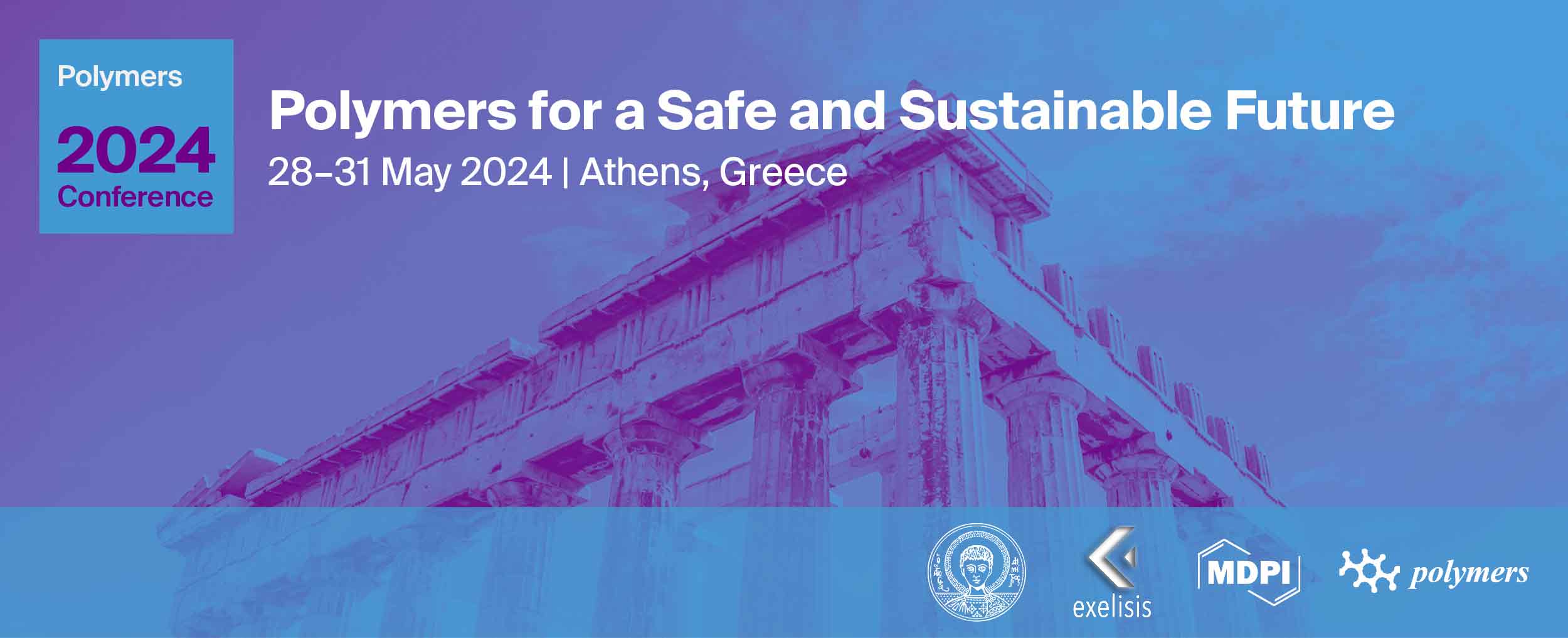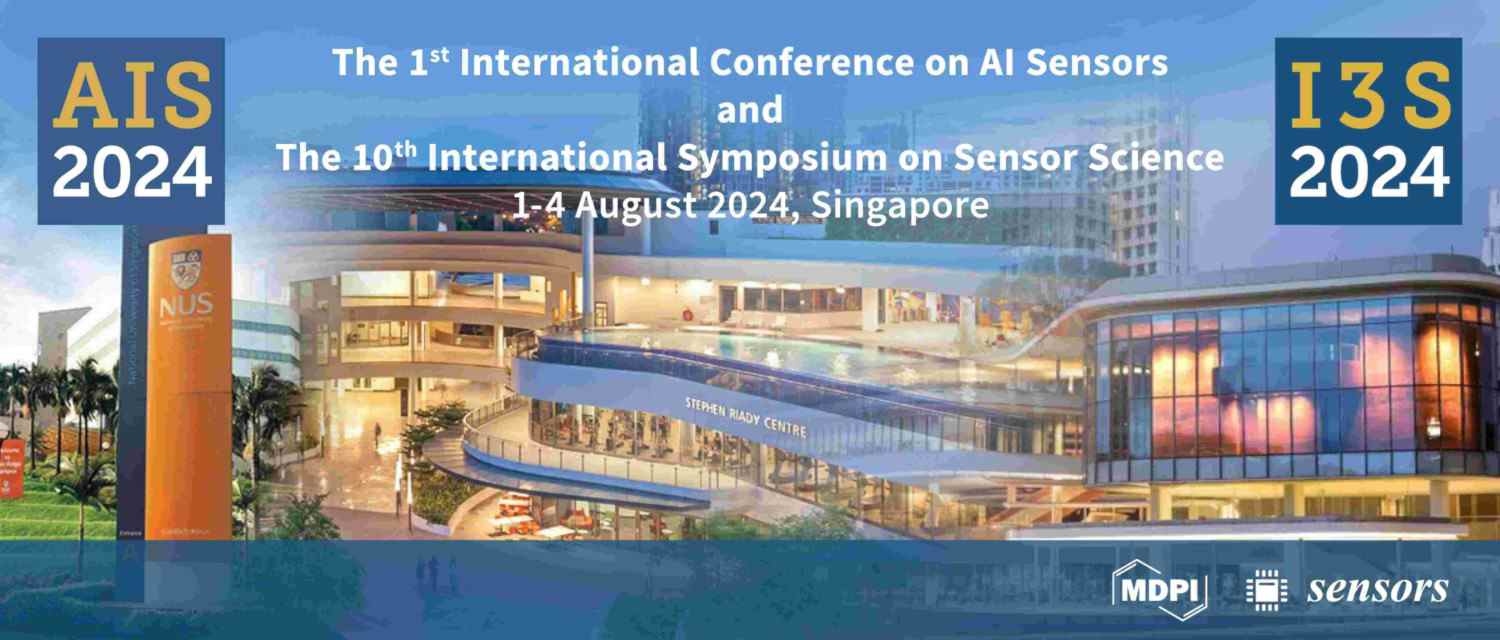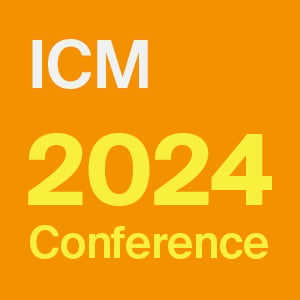-
 Short-Time Magnetron Sputtering for the Development of Carbon–Palladium Nanocomposites
Short-Time Magnetron Sputtering for the Development of Carbon–Palladium Nanocomposites -
 Photocatalysis Based on Metal Halide Perovskites for Organic Chemical Transformations
Photocatalysis Based on Metal Halide Perovskites for Organic Chemical Transformations -
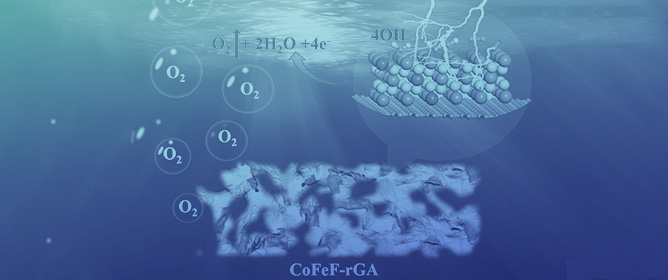 Graphene Architecture-Supported Porous Cobalt–Iron Fluoride Nanosheets for Promoting the Oxygen Evolution Reaction
Graphene Architecture-Supported Porous Cobalt–Iron Fluoride Nanosheets for Promoting the Oxygen Evolution Reaction -
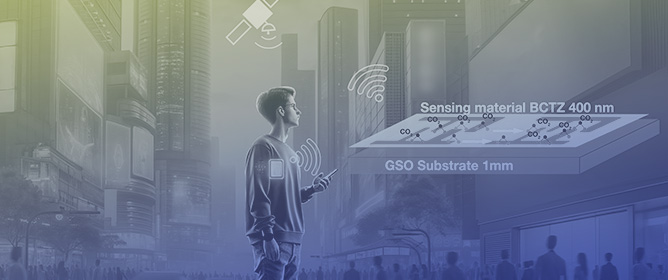 Lead-Free Perovskite Thin Films for Gas Sensing through Surface Acoustic Wave Device Detection
Lead-Free Perovskite Thin Films for Gas Sensing through Surface Acoustic Wave Device Detection -
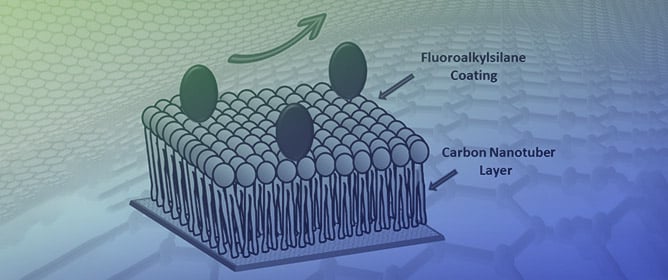 Development of a Carbon Nanotube-Enhanced FAS Bilayer Amphiphobic Coating for Biological Fluids
Development of a Carbon Nanotube-Enhanced FAS Bilayer Amphiphobic Coating for Biological Fluids
Journal Description
Nanomaterials
Nanomaterials
is an international, peer-reviewed, interdisciplinary scholarly open access journal, published semimonthly online by MDPI. It publishes reviews, regular research papers, communications, and short notes that are relevant to any field of study that involves nanomaterials, with respect to their science and application. The Spanish Carbon Group (GEC) is affiliated with Nanomaterials and their members receive discounts on the article processing charges.
- Open Access— free for readers, with article processing charges (APC) paid by authors or their institutions.
- High Visibility: indexed within Scopus, SCIE (Web of Science), PubMed, PMC, CAPlus / SciFinder, Inspec, and other databases.
- Journal Rank: JCR - Q1 (Physics, Applied) / CiteScore - Q1 (General Chemical Engineering)
- Rapid Publication: manuscripts are peer-reviewed and a first decision is provided to authors approximately 13.6 days after submission; acceptance to publication is undertaken in 2.5 days (median values for papers published in this journal in the second half of 2023).
- Recognition of Reviewers: reviewers who provide timely, thorough peer-review reports receive vouchers entitling them to a discount on the APC of their next publication in any MDPI journal, in appreciation of the work done.
- Companion journals for Nanomaterials include: Nanomanufacturing and Applied Nano.
Impact Factor:
5.3 (2022);
5-Year Impact Factor:
5.4 (2022)
Latest Articles
Gadolinium Doping Modulates the Enzyme-like Activity and Radical-Scavenging Properties of CeO2 Nanoparticles
Nanomaterials 2024, 14(9), 769; https://doi.org/10.3390/nano14090769 (registering DOI) - 26 Apr 2024
Abstract
Their unique physicochemical properties and multi-enzymatic activity make CeO2 nanoparticles (CeO2 NPs) the most promising active component of the next generation of theranostic drugs. When doped with gadolinium ions, CeO2 NPs constitute a new type of contrast agent for magnetic
[...] Read more.
Their unique physicochemical properties and multi-enzymatic activity make CeO2 nanoparticles (CeO2 NPs) the most promising active component of the next generation of theranostic drugs. When doped with gadolinium ions, CeO2 NPs constitute a new type of contrast agent for magnetic resonance imaging, possessing improved biocatalytic properties and a high level of biocompatibility. The present study is focused on an in-depth analysis of the enzyme-like properties of gadolinium-doped CeO2 NPs (CeO2:Gd NPs) and their antioxidant activity against superoxide anion radicals, hydrogen peroxide, and alkylperoxyl radicals. Using an anion-exchange method, CeO2:Gd NPs (~5 nm) with various Gd-doping levels (10 mol.% or 20 mol.%) were synthesized. The radical-scavenging properties and biomimetic activities (namely SOD- and peroxidase-like activities) of CeO2:Gd NPs were assessed using a chemiluminescent method with selective chemical probes: luminol, lucigenin, and L-012 (a highly sensitive luminol analogue). In particular, gadolinium doping has been shown to enhance the radical-scavenging properties of CeO2 NPs. Unexpectedly, both bare CeO2 NPs and CeO2:Gd NPs did not exhibit SOD-like activity, acting as pro-oxidants and contributing to the generation of reactive oxygen species. Gadolinium doping caused an increase in the pro-oxidant properties of nanoscale CeO2. At the same time, CeO2:Gd NPs did not significantly inhibit the intrinsic activity of the natural enzyme superoxide dismutase, and CeO2:Gd NPs conjugated with SOD demonstrated SOD-like activity. In contrast to SOD-like properties, peroxidase-like activity was observed for both bare CeO2 NPs and CeO2:Gd NPs. This type of enzyme-like activity was found to be pH-dependent. In a neutral medium (pH = 7.4), nanoscale CeO2 acted as a prooxidant enzyme (peroxidase), while in an alkaline medium (pH = 8.6), it lost its catalytic properties; thus, it cannot be regarded as a nanozyme. Both gadolinium doping and conjugation with a natural enzyme were shown to modulate the interaction of CeO2 NPs with the key components of redox homeostasis.
Full article
Open AccessArticle
Toxicological Characteristics of Bacterial Nanocellulose in an In Vivo Experiment—Part 1: The Systemic Effects
by
Vladimir A. Shipelin, Ekaterina A. Skiba, Vera V. Budayeva, Antonina A. Shumakova, Alexey I. Kolobanov, Ilya E. Sokolov, Kirill Z. Maisaya, Galina V. Guseva, Nikita V. Trusov, Alexander G. Masyutin, Yanina A. Delegan, Yulia N. Kocharovskaya, Alexander G. Bogun, Ivan V. Gmoshinski, Sergey A. Khotimchenko and Dmitry B. Nikityuk
Nanomaterials 2024, 14(9), 768; https://doi.org/10.3390/nano14090768 (registering DOI) - 26 Apr 2024
Abstract
Bacterial nanocellulose (BNC) is being considered as a potential replacement for microcrystalline cellulose as a food additive and a source of dietary fiber due to its unique properties. However, studies on the risks of consuming BNC in food are limited, and it is
[...] Read more.
Bacterial nanocellulose (BNC) is being considered as a potential replacement for microcrystalline cellulose as a food additive and a source of dietary fiber due to its unique properties. However, studies on the risks of consuming BNC in food are limited, and it is not yet approved for use in food in the US, EU, and Russia. Aim: This study aims to perform a toxicological and hygienic assessment of the safety of BNC in a subacute 8-week administration in rats. Methods: BNC was administered to male Wistar rats in doses of 0, 1.0, 10.0, and 100 mg/kg body weight for 8 weeks. Various parameters such as anxiety levels, cognitive function, organ masses, blood serum and liver biochemistry, oxidative stress markers, vitamin levels, antioxidant gene expression, and liver and kidney histology were evaluated. Results: Low and medium doses of BNC increased anxiety levels and liver glutathione, while high doses led to elevated LDL cholesterol, creatinine, and uric acid levels. Liver tissue showed signs of degeneration at high doses. BNC did not significantly affect vitamin levels. Conclusion: The adverse effects of BNC are either not dose-dependent or fall within normal physiological ranges. Any effects on rats are likely due to micronutrient deficiencies or impacts on intestinal microbiota.
Full article
(This article belongs to the Special Issue Nanosafety and Nanotoxicology: Current Opportunities and Challenges)
Open AccessArticle
Binder-Free CNT-Modified Excellent Electrodes for All-Vanadium Redox Flow Batteries
by
Nitika Devi, Prabhakar Singh and Yong-Song Chen
Nanomaterials 2024, 14(9), 767; https://doi.org/10.3390/nano14090767 - 26 Apr 2024
Abstract
Electrodes are one of the key components that influence the performance of all-vanadium redox flow batteries (VRFBs). A porous graphite felt with modified fiber surfaces that can provide a high specific activation surface is preferred as the electrode of a VRFB. In this
[...] Read more.
Electrodes are one of the key components that influence the performance of all-vanadium redox flow batteries (VRFBs). A porous graphite felt with modified fiber surfaces that can provide a high specific activation surface is preferred as the electrode of a VRFB. In this study, a simple binder-free approach is developed for preparing stable carbon nanotube modified graphite felt electrodes (CNT-GFs). Heat-treated graphite felt electrodes (H-GFs) are dip-coated using CNT homogeneous solution. Cyclic voltammetry (CV) and electrochemical impedance spectroscopy (EIS) results conclude that CNT-GFs have less resistance, better reaction currents, and reversibility as compared to H-GF. Cell performances showed that CNT-GFs significantly improve the performance of a VRFB, especially for the CNT-GF served in the positive side of the VRFB. CNT presence increases the electrochemical properties of the graphite electrode; as a result, reaction kinetics for both VO2+/VO2+ and V3+/V2+ are improved. Positive CNT-GF (P-CNT-GF) configured VRFB exhibits voltage efficiency, coulombic efficiency, and energy efficiency of 85%, 97%, and 82%, respectively, at the operating current density of 100 mA cm−2. At high current density of 200 mA cm−2, the VRFB with P-CNT-GF shows 73%, 98%, and 72% of the voltage, coulombic, and energy efficiencies, respectively. The energy efficiency of the CNT-GF is 6% higher when compared with that of B-H-GF. The VRFB with CNT-GF can provide stable performance for 300 cycles at 200 mA cm−2.
Full article
(This article belongs to the Section Energy and Catalysis)
►▼
Show Figures

Graphical abstract
Open AccessArticle
Biopolymer Meets Nanoclay: Rational Fabrication of Superb Adsorption Beads from Green Precursors for Efficient Capture of Pb(II) and Dyes
by
Jie Qi, Xue Wang, Huan Zhang, Xiangyu Liu, Wenbo Wang, Qingdong He and Fang Guo
Nanomaterials 2024, 14(9), 766; https://doi.org/10.3390/nano14090766 - 26 Apr 2024
Abstract
Renewable, green, and safe natural biopolymer-derived materials are highly desired for the purification of pollutants, but significantly improving their performance without the introduction of additional harmful chemicals remains a huge challenge. Based on the concept of “structure optimization design,” environment-friendly composite beads (named
[...] Read more.
Renewable, green, and safe natural biopolymer-derived materials are highly desired for the purification of pollutants, but significantly improving their performance without the introduction of additional harmful chemicals remains a huge challenge. Based on the concept of “structure optimization design,” environment-friendly composite beads (named SA/PASP/RE) with excellent adsorption performance and recyclability were rationally constructed through a green ionic crosslinking route, using the completely green biopolymer sodium alginate (SA), sodium salt of polyaspartic acid (PASP), and the natural nanoclay rectorite (RE) as starting materials. The nano-layered RE was embedded in the polymer matrix to prevent the polymer chain from becoming over-entangled so that more adsorption sites inside the polymer network were exposed, which effectively improved the mass transfer efficiency of the adsorbent and the removal rate of contaminants. The composite beads embedded with 0.6% RE showed high adsorption capacities of 211.78, 197.13, and 195.69 mg/g for Pb(II) and 643.00, 577.80, and 567.10 mg/g for methylene blue (MB) in Yellow River water, Yangtze River water, and tap water, respectively. And the beads embedded with 43% RE could efficiently adsorb Pb(II) and MB with high capacities of 187.78 mg/g and 586.46 mg/g, respectively. This study provides a new route to design and develop a green, cost-effective, and efficient adsorbent for the decontamination of wastewater.
Full article
(This article belongs to the Special Issue Novel Nanostructured Materials and Their Applications in Wastewater Treatment)
Open AccessArticle
Mixed Metal Oxide W-TiO2 Nanopowder for Environmental Process: Synergy of Adsorption and Photocatalysis
by
Khley Cheng, Socheata Heng, Siteng Tieng, Ford David, Sarah Dine, Oriana Haddad, Christophe Colbeau-Justin, Mamadou Traore and Andrei Kanaev
Nanomaterials 2024, 14(9), 765; https://doi.org/10.3390/nano14090765 - 26 Apr 2024
Abstract
A mixed metal oxide W-TiO2 nanopowder photocatalyst was prepared by using the sol–gel method with a broad range of elemental compositions x = CW/(CW + CTi), including TiO2 and WO3. The material was structurally
[...] Read more.
A mixed metal oxide W-TiO2 nanopowder photocatalyst was prepared by using the sol–gel method with a broad range of elemental compositions x = CW/(CW + CTi), including TiO2 and WO3. The material was structurally characterized and evaluated in adsorption and photocatalytic processes by testing its removal capacity of a representative pollutant methylene blue (MB) in aqueous solutions and under UV-A and sunlight illuminations. The nanopowders appeared to be more effective adsorbents than pure TiO2 and WO3 materials, showing a maximum at 15 mol% W, which was set as the tungsten solubility limit in anatase titania. At the same time, the photocatalytic decomposition of MB peaked at 2 mol% W. The examination of different compositions showed that the most effective MB removal took place at 15 mol% W, which was attributed to the combined action of adsorption and heterogeneous photocatalysis. Moreover, MB decomposition under sunlight was stronger than under UV-A, suggesting photocatalyst activation by visible light. The pollutant removal efficiency of the material with 15 mol% W was enhanced by a factor of ~10 compared to pure TiO2 at the beginning of the process, which shows its high potential for use in depollution processes in emergency cases of a great pollutant leak. As a result, a Wx=0.15-TiO2 catalyst could be of high interest for wastewater purification in industrial plants.
Full article
(This article belongs to the Special Issue Degradation and Photocatalytic Properties of Nanocomposites)
Open AccessArticle
Development of Au Nanoparticle Two-Dimensional Assemblies Dispersed with Au Nanoparticle-Nanostar Complexes and Surface-Enhanced Raman Scattering Activity
by
Kosuke Sugawa, Kaichi Ono, Ritsurai Tomii, Yuka Hori, Yu Aoki, Koki Honma, Kaoru Tamada and Joe Otsuki
Nanomaterials 2024, 14(9), 764; https://doi.org/10.3390/nano14090764 - 26 Apr 2024
Abstract
We recently found that polyvinylpyrrolidone (PVP)-protected metal nanoparticles dispersed in water/butanol mixture spontaneously float to the air/water interface and form two-dimensional assemblies due to classical surface excess theory and Rayleigh–Bénard–Marangoni convection induced by butanol evaporation. In this study, we found that by leveraging
[...] Read more.
We recently found that polyvinylpyrrolidone (PVP)-protected metal nanoparticles dispersed in water/butanol mixture spontaneously float to the air/water interface and form two-dimensional assemblies due to classical surface excess theory and Rayleigh–Bénard–Marangoni convection induced by butanol evaporation. In this study, we found that by leveraging this principle, a unique structure is formed where hetero gold nanospheres (AuNPs)/gold nanostars (AuNSs) complexes are dispersed within AuNP two-dimensional assemblies, obtained from a mixture of polyvinylpyrrolidone-protected AuNPs and AuNSs that interact electrostatically with the AuNPs. These structures were believed to form as a result of AuNPs/AuNSs complexes formed in the water/butanol mixture floating to the air/water interface and being incorporated into the growth of AuNP two-dimensional assemblies. These structures were obtained by optimizing the amount of mixed AuNSs, with excessive addition resulting in the formation of random three-dimensional network structures. The AuNP assemblies dispersed with AuNPs/AuNSs complexes exhibited significantly higher Raman (surface-enhanced resonance Raman scattering: SERRS) activity compared to simple AuNP assemblies, while the three-dimensional network structure did not show significant SERRS activity enhancement. These results demonstrate the excellent SERRS activity of AuNP two-dimensional assemblies dispersed with hetero AuNPs/AuNSs complexes.
Full article
(This article belongs to the Section Nanofabrication and Nanomanufacturing)
►▼
Show Figures
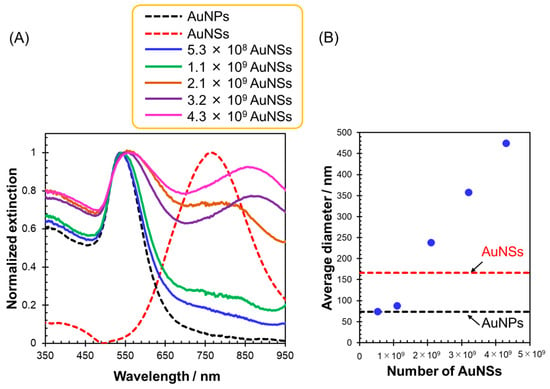
Figure 1
Open AccessArticle
Investigation of Field Emission Properties of Carbon Nanotube Arrays of Different Morphologies
by
Maksim A. Chumak, Alexander V. Shchegolkov, Eugeni O. Popov, Sergey V. Filippov, Anatoly G. Kolosko, Aleksei V. Shchegolkov and Arif A. Babaev
Nanomaterials 2024, 14(9), 763; https://doi.org/10.3390/nano14090763 - 26 Apr 2024
Abstract
This article presents, for the first time, a comparative analysis of the emission characteristics of large-area field-effect cathodes (LAFE) based on carbon nanotubes (CNTs) of various morphologies according to key parameters using a unique computerized technique. The work presents a description of a
[...] Read more.
This article presents, for the first time, a comparative analysis of the emission characteristics of large-area field-effect cathodes (LAFE) based on carbon nanotubes (CNTs) of various morphologies according to key parameters using a unique computerized technique. The work presents a description of a technology for creating various CNT arrays and their comprehensive structure characterization. All CNT arrays synthesized by the catalytic PECVD method on a silicon substrate showed a high degree of chemical purity under the presented technological conditions. In some cases, nanoisland films of Fe were used as a catalyst; in others, thin films of NiO were used, which were deposited on a silicon wafer by chemical vapor deposition (CVD) and atomic layer deposition (ALD), respectively. As a result of these studies, it turned out that an array with a thick CNT coating has good resistance to the action of strong electric fields, fairly good uniformity of distribution of emission centers, a fairly high selection current (2.88 mA/cm2 at 4.53 V/μm), and compliance with the normal current mode according to the “orthodox” test, which makes the morphology of such structures the most promising for further technological optimization of CNT-based cathodes for various practical applications.
Full article
(This article belongs to the Special Issue Nano Surface Engineering)
►▼
Show Figures

Figure 1
Open AccessArticle
Electronic and Molecular Adsorption Properties of Pt-Doped BC6N: An Ab-Initio Investigation
by
Nada M. Alghamdi, Mohamed M. Fadlallah, Hind M. Al-qahtani and Ahmed A. Maarouf
Nanomaterials 2024, 14(9), 762; https://doi.org/10.3390/nano14090762 - 26 Apr 2024
Abstract
In the last two decades, significant efforts have been particularly invested in two-dimensional (2D) hexagonal boron carbon nitride h-BxCyNz because of its unique physical and chemical characteristics. The presence of the carbon atoms lowers the large gap
[...] Read more.
In the last two decades, significant efforts have been particularly invested in two-dimensional (2D) hexagonal boron carbon nitride h-BxCyNz because of its unique physical and chemical characteristics. The presence of the carbon atoms lowers the large gap of its cousin structure, boron nitride (BN), making it more suitable for various applications. Here, we use density functional theory to study the structural, electronic, and magnetic properties of Pt-doped BC6N (Pt-BC6N, as well as its adsorption potential of small molecular gases (NO, NO2, CO2, NH3). We consider all distinct locations of the Pt atom in the supercell (B, N, and two C sites). Different adsorption locations are also considered for the pristine and Pt-doped systems. The formation energies of all Pt-doped structures are close to those of the pristine system, reflecting their stability. The pristine BC6N is semiconducting, so doping with Pt at the B and N sites gives a diluted magnetic semiconductor while doping at the C1 and C2 sites results in a smaller gap semiconductor. We find that all doped structures exhibit direct band gaps. The studied molecules are very weakly physisorbed on the pristine structure. Pt doping leads to much stronger interactions, where NO, NO2, and NH3 chemisorb on the doped systems, and CO2 physiorb, illustrating the doped systems’ potential for gas purification applications. We also find that the adsorption changes the electronic and magnetic properties of the doped systems, inviting their consideration for spintronics and gas sensing.
Full article
(This article belongs to the Section 2D and Carbon Nanomaterials)
►▼
Show Figures

Figure 1
Open AccessArticle
Mechanical and Electrical Properties of Polyethylene Terephthalate Glycol/Antimony Tin Oxide Nanocomposites in Material Extrusion 3D Printing
by
Markos Petousis, Nikolaos Michailidis, Vassilis Saltas, Vassilis Papadakis, Mariza Spiridaki, Nikolaos Mountakis, Apostolos Argyros, John Valsamos, Nektarios K. Nasikas and Nectarios Vidakis
Nanomaterials 2024, 14(9), 761; https://doi.org/10.3390/nano14090761 - 26 Apr 2024
Abstract
In this study, poly (ethylene terephthalate) (PETG) was combined with Antimony-doped Tin Oxide (ATO) to create five different composites (2.0–10.0 wt.% ATO). The PETG/ATO filaments were extruded and supplied to a material extrusion (MEX) 3D printer to fabricate the specimens following international standards.
[...] Read more.
In this study, poly (ethylene terephthalate) (PETG) was combined with Antimony-doped Tin Oxide (ATO) to create five different composites (2.0–10.0 wt.% ATO). The PETG/ATO filaments were extruded and supplied to a material extrusion (MEX) 3D printer to fabricate the specimens following international standards. Various tests were conducted on thermal, rheological, mechanical, and morphological properties. The mechanical performance of the prepared nanocomposites was evaluated using flexural, tensile, microhardness, and Charpy impact tests. The dielectric and electrical properties of the prepared composites were evaluated over a broad frequency range. The dimensional accuracy and porosity of the 3D printed structure were assessed using micro-computed tomography. Other investigations include scanning electron microscopy and energy-dispersive X-ray spectroscopy, which were performed to investigate the structures and morphologies of the samples. The PETG/6.0 wt.% ATO composite presented the highest mechanical performance (21% increase over the pure polymer in tensile strength). The results show the potential of such nanocomposites when enhanced mechanical performance is required in MEX 3D printing applications, in which PETG is the most commonly used polymer.
Full article
(This article belongs to the Special Issue Nano-Scale Microstructure Evolution, Micromechanics Behavior and Surface Control in Additive Manufacturing)
►▼
Show Figures
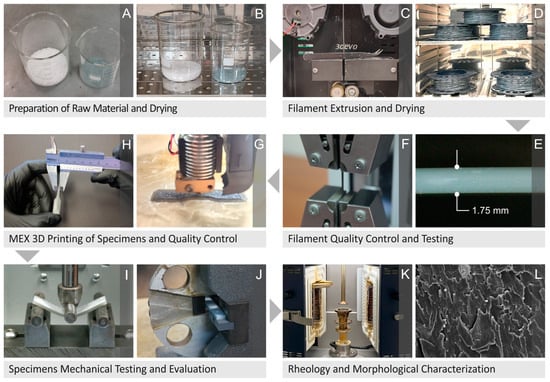
Figure 1
Open AccessArticle
Graphene Oxide (GO)-Based Bioink with Enhanced 3D Printability and Mechanical Properties for Tissue Engineering Applications
by
Katarzyna Kosowska, Paulina Korycka, Kamila Jankowska-Snopkiewicz, Joanna Gierałtowska, Milena Czajka, Katarzyna Florys-Jankowska, Magdalena Dec, Agnieszka Romanik-Chruścielewska, Maciej Małecki, Kinga Westphal, Michał Wszoła and Marta Klak
Nanomaterials 2024, 14(9), 760; https://doi.org/10.3390/nano14090760 - 26 Apr 2024
Abstract
Currently, a major challenge in material engineering is to develop a cell-safe biomaterial with significant utility in processing technology such as 3D bioprinting. The main goal of this work was to optimize the composition of a new graphene oxide (GO)-based bioink containing additional
[...] Read more.
Currently, a major challenge in material engineering is to develop a cell-safe biomaterial with significant utility in processing technology such as 3D bioprinting. The main goal of this work was to optimize the composition of a new graphene oxide (GO)-based bioink containing additional extracellular matrix (ECM) with unique properties that may find application in 3D bioprinting of biomimetic scaffolds. The experimental work evaluated functional properties such as viscosity and complex modulus, printability, mechanical strength, elasticity, degradation and absorbability, as well as biological properties such as cytotoxicity and cell response after exposure to a biomaterial. The findings demonstrated that the inclusion of GO had no substantial impact on the rheological properties and printability, but it did enhance the mechanical properties. This enhancement is crucial for the advancement of 3D scaffolds that are resilient to deformation and promote their utilization in tissue engineering investigations. Furthermore, GO-based hydrogels exhibited much greater swelling, absorbability and degradation compared to non-GO-based bioink. Additionally, these biomaterials showed lower cytotoxicity. Due to its properties, it is recommended to use bioink containing GO for bioprinting functional tissue models with the vascular system, e.g., for testing drugs or hard tissue models.
Full article
(This article belongs to the Special Issue Nanoscale Functional Materials and Devices for Biomedical Applications)
►▼
Show Figures

Graphical abstract
Open AccessArticle
Structural, Optical and Dielectric Properties of Some Nanocomposites Derived from Copper Oxide Nanoparticles Embedded in Poly(vinylpyrrolidone) Matrix
by
Carmen Gherasim, Mihai Asandulesa, Nicusor Fifere, Florica Doroftei, Daniel Tîmpu and Anton Airinei
Nanomaterials 2024, 14(9), 759; https://doi.org/10.3390/nano14090759 - 25 Apr 2024
Abstract
Polymer nanocomposite films based on poly(vinyl pyrrolidone) incorporated with different amounts of copper oxide (CuO) nanoparticles were prepared by the solution casting technique. The PVP/CuO nanocomposites were analyzed by X-ray diffractometry (XRD), scanning electron microscopy, UV–Visible absorption spectroscopy and dielectric spectroscopy. The XRD
[...] Read more.
Polymer nanocomposite films based on poly(vinyl pyrrolidone) incorporated with different amounts of copper oxide (CuO) nanoparticles were prepared by the solution casting technique. The PVP/CuO nanocomposites were analyzed by X-ray diffractometry (XRD), scanning electron microscopy, UV–Visible absorption spectroscopy and dielectric spectroscopy. The XRD analysis showed that the monoclinic structure of cupric oxide was maintained in the PVP host matrix. The key optical parameters, such as optical energy gap Eg, Urbach energy EU, absorption coefficient and refractive index, were estimated based on the UV-Vis data. The optical characteristics of the nanocomposite films revealed that their transmittance and absorption were influenced by the addition of CuO nanoparticles in the PVP matrix. Incorporation of CuO nanoparticles into the PVP matrix led to a significant decrease in band gap energy and an increase in the refractive index. The dielectric and electrical behaviors of the PVP/CuO nanocomposites were analyzed over a frequency range between 10 Hz and 1 MHz. The effect of CuO loading on the dielectric parameters (dielectric constant and dielectric loss) of the metal oxide nanocomposites was also discussed.
Full article
Open AccessArticle
The Influence of the Mechanical Compliance of a Substrate on the Morphology of Nanoporous Gold Thin Films
by
Sadi Shahriar, Kavya Somayajula, Conner Winkeljohn, Jeremy K. Mason and Erkin Seker
Nanomaterials 2024, 14(9), 758; https://doi.org/10.3390/nano14090758 - 25 Apr 2024
Abstract
Nanoporous gold (np-Au) has found its use in applications ranging from catalysis to biosensing, where pore morphology plays a critical role in performance. While the morphology evolution of bulk np-Au has been widely studied, knowledge about its thin-film form is limited. This work
[...] Read more.
Nanoporous gold (np-Au) has found its use in applications ranging from catalysis to biosensing, where pore morphology plays a critical role in performance. While the morphology evolution of bulk np-Au has been widely studied, knowledge about its thin-film form is limited. This work hypothesizes that the mechanical compliance of the thin film substrate can play a critical role in the morphology evolution. Via experimental and finite-element-analysis approaches, we investigate the morphological variation in np-Au thin films deposited on compliant silicone (PDMS) substrates of a range of thicknesses anchored on rigid glass supports and compare those to the morphology of np-Au deposited on glass. More macroscopic (10 s to 100 s of microns) cracks and discrete islands form in the np-Au films on PDMS compared to on glass. Conversely, uniformly distributed microscopic (100 s of nanometers) cracks form in greater numbers in the np-Au films on glass than those on PDMS, with the cracks located within the discrete islands. The np-Au films on glass also show larger ligament and pore sizes, possibly due to higher residual stresses compared to the np-Au/PDMS films. The effective elastic modulus of the substrate layers decreases with increasing PDMS thickness, resulting in secondary np-Au morphology effects, including a reduction in macroscopic crack-to-crack distance, an increase in microscopic crack coverage, and a widening of the microscopic cracks. However, changes in the ligament/pore widths with PDMS thickness are negligible, allowing for independent optimization for cracking. We expect these results to inform the integration of functional np-Au films on compliant substrates into emerging applications, including flexible electronics.
Full article
(This article belongs to the Special Issue Design, Fabrication and Applications of Nanoporous Materials)
►▼
Show Figures
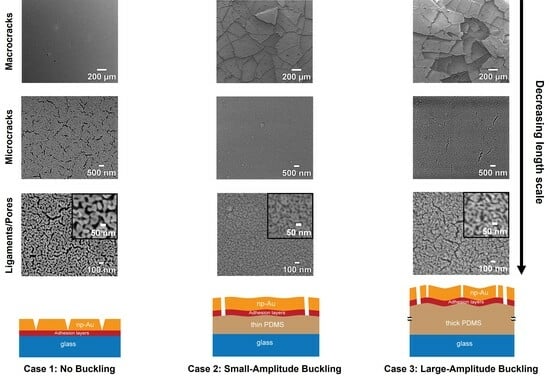
Graphical abstract
Open AccessCommunication
A MOF-Templated Double-Shelled Co3O4/NiCo2O4 Nanocomposite for Electrochemical Detection of Alfuzosin
by
Al-Amin, Gajapaneni Venkata Prasad, Seung Joo Jang, Jeong-Wook Oh and Tae Hyun Kim
Nanomaterials 2024, 14(9), 757; https://doi.org/10.3390/nano14090757 - 25 Apr 2024
Abstract
We developed a novel electrochemical sensor for the detection of alfuzosin (AFZ), a drug used to treat benign prostatic hyperplasia, using a double-shelled Co3O4/NiCo2O4 nanocomposite-modified electrode. The nanocomposites were synthesized using a template-assisted approach, with zeolitic
[...] Read more.
We developed a novel electrochemical sensor for the detection of alfuzosin (AFZ), a drug used to treat benign prostatic hyperplasia, using a double-shelled Co3O4/NiCo2O4 nanocomposite-modified electrode. The nanocomposites were synthesized using a template-assisted approach, with zeolitic imidazole framework-67 (ZIF-67) as the sacrificial template, involving the formation of uniform ZIF-67/Ni-Co layered double hydroxide (LDH) hollow structures followed by calcination to achieve the final nanocomposite. The nanocomposite was characterized by various techniques and showed high porosity, large surface area, and good conductivity. The nanocomposite-modified electrode exhibited excellent electrocatalytic activity towards AFZ oxidation, with a wide linear range of 5–180 µM and a low limit of detection of 1.37 µM. The sensor also demonstrated good repeatability, reproducibility, and stability selectivity in the presence of common interfering substances. The sensor was successfully applied to determine the AFZ in pharmaceutical tablets and human serum samples, with satisfactory recoveries. Our results suggest that the double-shelled Co3O4/NiCo2O4 nanocomposite is a promising material for the fabrication of electrochemical sensors for AFZ detection.
Full article
(This article belongs to the Special Issue Trends in Electrochemical Nanosensing)
Open AccessReview
The Effectiveness Mechanisms of Carbon Nanotubes (CNTs) as Reinforcements for Magnesium-Based Composites for Biomedical Applications: A Review
by
Abbas Saberi, Madalina Simona Baltatu and Petrica Vizureanu
Nanomaterials 2024, 14(9), 756; https://doi.org/10.3390/nano14090756 - 25 Apr 2024
Abstract
As a smart implant, magnesium (Mg) is highly biocompatible and non-toxic. In addition, the elastic modulus of Mg relative to other biodegradable metals (iron and zinc) is close to the elastic modulus of natural bone, making Mg an attractive alternative to hard tissues.
[...] Read more.
As a smart implant, magnesium (Mg) is highly biocompatible and non-toxic. In addition, the elastic modulus of Mg relative to other biodegradable metals (iron and zinc) is close to the elastic modulus of natural bone, making Mg an attractive alternative to hard tissues. However, high corrosion rates and low strength under load relative to bone are some challenges for the widespread use of Mg in orthopedics. Composite fabrication has proven to be an excellent way to improve the mechanical performance and corrosion control of Mg. As a result, their composites emerge as an innovative biodegradable material. Carbon nanotubes (CNTs) have superb properties like low density, high tensile strength, high strength-to-volume ratio, high thermal conductivity, and relatively good antibacterial properties. Therefore, using CNTs as reinforcements for the Mg matrix has been proposed as an essential option. However, the lack of understanding of the mechanisms of effectiveness in mechanical, corrosion, antibacterial, and cellular fields through the presence of CNTs as Mg matrix reinforcements is a challenge for their application. This review focuses on recent findings on Mg/CNT composites fabricated for biological applications. The literature mentions effective mechanisms for mechanical, corrosion, antimicrobial, and cellular domains with the presence of CNTs as reinforcements for Mg-based nanobiocomposites.
Full article
(This article belongs to the Special Issue Preparation, Separation, Characterization and Application of Carbon Nanotubes)
Open AccessArticle
Uniaxial Magnetization and Electrocatalytic Performance for Hydrogen Evolution on Electrodeposited Ni Nanowire Array Electrodes with Ultra-High Aspect Ratio
by
Yumu Sako, Ryusei Saeki, Masamitsu Hayashida and Takeshi Ohgai
Nanomaterials 2024, 14(9), 755; https://doi.org/10.3390/nano14090755 - 25 Apr 2024
Abstract
Ni nanowire array electrodes with an extremely large surface area were made through an electrochemical reduction process utilizing an anodized alumina template with a pore length of 320 µm, pore diameter of 100 nm, and pore aspect ratio of 3200. The electrodeposited Ni
[...] Read more.
Ni nanowire array electrodes with an extremely large surface area were made through an electrochemical reduction process utilizing an anodized alumina template with a pore length of 320 µm, pore diameter of 100 nm, and pore aspect ratio of 3200. The electrodeposited Ni nanowire arrays were preferentially oriented in the (111) plane regardless of the deposition potential and exhibited uniaxial magnetic anisotropy with easy magnetization in the axial direction. With respect to the magnetic properties, the squareness and coercivity of the electrodeposited Ni nanowire arrays improved up to 0.8 and 550 Oe, respectively. It was also confirmed that the magnetization reversal was suppressed by increasing the aspect ratio and the hard magnetic performance was improved. The electrocatalytic performance for hydrogen evolution on the electrodeposited Ni nanowire arrays was also investigated and the hydrogen overvoltage was reduced down to ~0.1 V, which was almost 0.2 V lower than that on the electrodeposited Ni films. Additionally, the current density for hydrogen evolution at −1.0 V and −1.5 V vs. Ag/AgCl increased up to approximately −580 A/m2 and −891 A/m2, respectively, due to the extremely large surface area of the electrodeposited Ni nanowire arrays.
Full article
(This article belongs to the Special Issue Advances in Nanostructured Electrode Materials: Design and Applications)
Open AccessArticle
Binder-Free Three-Dimensional Porous Graphene Cathodes via Self-Assembly for High-Capacity Lithium–Oxygen Batteries
by
Yanna Liu, Wen Meng, Yuying Gao, Menglong Zhao, Ming Li and Liang Xiao
Nanomaterials 2024, 14(9), 754; https://doi.org/10.3390/nano14090754 - 25 Apr 2024
Abstract
The porous architectures of oxygen cathodes are highly desired for high-capacity lithium–oxygen batteries (LOBs) to support cathodic catalysts and provide accommodation for discharge products. However, controllable porosity is still a challenge for laminated cathodes with cathode materials and binders, since polymer binders usually
[...] Read more.
The porous architectures of oxygen cathodes are highly desired for high-capacity lithium–oxygen batteries (LOBs) to support cathodic catalysts and provide accommodation for discharge products. However, controllable porosity is still a challenge for laminated cathodes with cathode materials and binders, since polymer binders usually shield the active sites of catalysts and block the pores of cathodes. In addition, polymer binders such as poly(vinylidene fluoride) (PVDF) are not stable under the nucleophilic attack of intermediate product superoxide radicals in the oxygen electrochemical environment. The parasitic reactions and blocking effect of binders deteriorate and then quickly shut down the operation of LOBs. Herein, the present work proposes a binder-free three-dimensional (3D) porous graphene (PG) cathode for LOBs, which is prepared by the self-assembly and the chemical reduction of GO with triblock copolymer soft templates (Pluronic F127). The interconnected mesoporous architecture of resultant 3D PG cathodes achieved an ultrahigh capacity of 10,300 mAh g−1 for LOBs. Further, the cathodic catalysts ruthenium (Ru) and manganese dioxide (MnO2) were, respectively, loaded onto the inner surface of PG cathodes to lower the polarization and enhance the cycling performance of LOBs. This work provides an effective way to fabricate free-standing 3D porous oxygen cathodes for high-performance LOBs.
Full article
(This article belongs to the Section Energy and Catalysis)
Open AccessArticle
Additive Manufacturing of Electrically Conductive Multi-Layered Nanocopper in an Air Environment
by
David Pervan, Anil Bastola, Robyn Worsley, Ricky Wildman, Richard Hague, Edward Lester and Christopher Tuck
Nanomaterials 2024, 14(9), 753; https://doi.org/10.3390/nano14090753 - 25 Apr 2024
Abstract
The additive manufacturing (AM) of functional copper (Cu) parts is a major goal for many industries, from aerospace to automotive to electronics, because Cu has a high thermal and electrical conductivity as well as being ~10× cheaper than silver. Previous studies on AM
[...] Read more.
The additive manufacturing (AM) of functional copper (Cu) parts is a major goal for many industries, from aerospace to automotive to electronics, because Cu has a high thermal and electrical conductivity as well as being ~10× cheaper than silver. Previous studies on AM of Cu have concentrated mainly on high-energy manufacturing processes such as Laser Powder Bed Fusion, Electron Beam Melting, and Binder Jetting. These processes all require high-temperature heat treatment in an oxygen-free environment. This paper shows an AM route to multi-layered microparts from novel nanoparticle (NP) Cu feedstocks, performed in an air environment, employing a low-power (<10 W) laser sintering process. Cu NP ink was deposited using two mechanisms, inkjet printing, and bar coating, followed by low-power laser exposure to induce particle consolidation. Initial parts were manufactured to a height of approximately 100 µm, which was achieved by multi-layer printing of 15 (bar-coated) to 300 (inkjetted) layers. There was no evidence of oxidised copper in the sintered material, but they were found to be low-density, porous structures. Nonetheless, electrical resistivity of ~28 × 10−8 Ω m was achieved. Overall, the aim of this study is to offer foundational knowledge for upscaling the process to additively manufacture Cu 3D parts of significant size via sequential nanometal ink deposition and low-power laser processing.
Full article
(This article belongs to the Special Issue Editorial Board Members’ Collection Series: New Trends in Inorganic Nanoparticles and Composites from Preparation to Applications)
Open AccessArticle
Enhancing the Photocatalytic Activity of Halide Perovskite Cesium Bismuth Bromide/Hydrogen Titanate Heterostructures for Benzyl Alcohol Oxidation
by
Huzaikha Awang, Abdo Hezam, Tim Peppel and Jennifer Strunk
Nanomaterials 2024, 14(9), 752; https://doi.org/10.3390/nano14090752 - 25 Apr 2024
Abstract
Halide perovskite Cs3Bi2Br9 (CBB) has excellent potential in photocatalysis due to its promising light-harvesting properties. However, its photocatalytic performance might be limited due to the unfavorable charge carrier migration and water-induced properties, which limit the stability and photocatalytic
[...] Read more.
Halide perovskite Cs3Bi2Br9 (CBB) has excellent potential in photocatalysis due to its promising light-harvesting properties. However, its photocatalytic performance might be limited due to the unfavorable charge carrier migration and water-induced properties, which limit the stability and photocatalytic performance. Therefore, we address this constraint in this work by synthesizing a stable halide perovskite heterojunction by introducing hydrogen titanate nanosheets (H2Ti3O7-NS, HTiO-NS). Optimizing the weight % (wt%) of CBB enables synthesizing the optimal CBB/HTiO-NS, CBHTNS heterostructure. The detailed morphology and structure characterization proved that the cubic shape of CBB is anchored on the HTiO-NS surface. The 30 wt% CBB/HTiO-NS-30 (CBHTNS-30) heterojunction showed the highest BnOH photooxidation performance with 98% conversion and 75% benzoic acid (BzA) selectivity at 2 h under blue light irradiation. Detailed optical and photoelectrochemical characterization showed that the incorporating CBB and HTiO-NS widened the range of the visible-light response and improved the ability to separate the photo-induced charge carriers. The presence of HTiO-NS has increased the oxidative properties, possibly by charge separation in the heterojunction, which facilitated the generation of superoxide and hydroxyl radicals. A possible reaction pathway for the photocatalytic oxidation of BnOH to BzH and BzA was also suggested. Furthermore, through scavenger experiments, we found that the photogenerated h+, e− and •O2− play an essential role in the BnOH photooxidation, while the •OH have a minor effect on the reaction. This work may provide a strategy for using HTiO-NS-based photocatalyst to enhance the charge carrier migration and photocatalytic performance of CBB.
Full article
(This article belongs to the Special Issue Perovskite Nanostructures: Synthesis, Properties and Applications)
►▼
Show Figures

Figure 1
Open AccessArticle
Fe,Ni-Based Metal–Organic Frameworks Embedded in Nanoporous Nitrogen-Doped Graphene as a Highly Efficient Electrocatalyst for the Oxygen Evolution Reaction
by
Panjuan Tang, Biagio Di Vizio, Jijin Yang, Bhushan Patil, Mattia Cattelan and Stefano Agnoli
Nanomaterials 2024, 14(9), 751; https://doi.org/10.3390/nano14090751 - 25 Apr 2024
Abstract
The quest for economically sustainable electrocatalysts to replace critical materials in anodes for the oxygen evolution reaction (OER) is a key goal in electrochemical conversion technologies, and, in this context, metal–organic frameworks (MOFs) offer great promise as alternative electroactive materials. In this study,
[...] Read more.
The quest for economically sustainable electrocatalysts to replace critical materials in anodes for the oxygen evolution reaction (OER) is a key goal in electrochemical conversion technologies, and, in this context, metal–organic frameworks (MOFs) offer great promise as alternative electroactive materials. In this study, a series of nanostructured electrocatalysts was successfully synthesized by growing tailored Ni-Fe-based MOFs on nitrogen-doped graphene, creating composite systems named MIL-NG-n. Their growth was tuned using a molecular modulator, revealing a non-trivial trend of the properties as a function of the modulator quantity. The most active material displayed an excellent OER performance characterized by a potential of 1.47 V (vs. RHE) to reach 10 mA cm−2, a low Tafel slope (42 mV dec−1), and a stability exceeding 18 h in 0.1 M KOH. This outstanding performance was attributed to the synergistic effect between the unique MOF architecture and N-doped graphene, enhancing the amount of active sites and the electron transfer. Compared to a simple mixture of MOFs and N-doped graphene or the deposition of Fe and Ni atoms on the N-doped graphene, these hybrid materials demonstrated a clearly superior OER performance.
Full article
(This article belongs to the Special Issue Advances in Nanoscale Electrocatalysts)
►▼
Show Figures
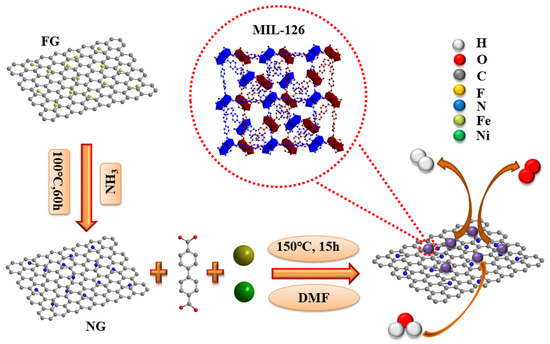
Figure 1
Open AccessArticle
Evolution of the Electronic Properties of Tellurium Crystals with Plasma Irradiation Treatment
by
Congzhi Bi, Tianyu Wu, Jingjing Shao, Pengtao Jing, Hai Xu, Jilian Xu, Wenxi Guo, Yufei Liu and Da Zhan
Nanomaterials 2024, 14(9), 750; https://doi.org/10.3390/nano14090750 - 25 Apr 2024
Abstract
Tellurium exhibits exceptional intrinsic electronic properties. However, investigations into the modulation of tellurium’s electronic properties through physical modification are notably scarce. Here, we present a comprehensive study focused on the evolution of the electronic properties of tellurium crystal flakes under plasma irradiation treatment
[...] Read more.
Tellurium exhibits exceptional intrinsic electronic properties. However, investigations into the modulation of tellurium’s electronic properties through physical modification are notably scarce. Here, we present a comprehensive study focused on the evolution of the electronic properties of tellurium crystal flakes under plasma irradiation treatment by employing conductive atomic force microscopy and Raman spectroscopy. The plasma-treated tellurium experienced a process of defect generation through lattice breaking. Prior to the degradation of electronic transport performance due to plasma irradiation treatment, we made a remarkable observation: in the low-energy region of hydrogen plasma-treated tellurium, a notable enhancement in conductivity was unexpectedly detected. The mechanism underlying this enhancement in electronic transport performance was thoroughly elucidated by comparing it with the electronic structure induced by argon plasma irradiation. This study not only fundamentally uncovers the effects of plasma irradiation on tellurium crystal flakes but also unearths an unprecedented trend of enhanced electronic transport performance at low irradiation energies when utilizing hydrogen plasma. This abnormal trend bears significant implications for guiding the prospective application of tellurium-based 2D materials in the realm of electronic devices.
Full article
(This article belongs to the Special Issue Low-Dimensional Semiconductor Nanomaterials: Preparation, Characterization, and Application)
►▼
Show Figures
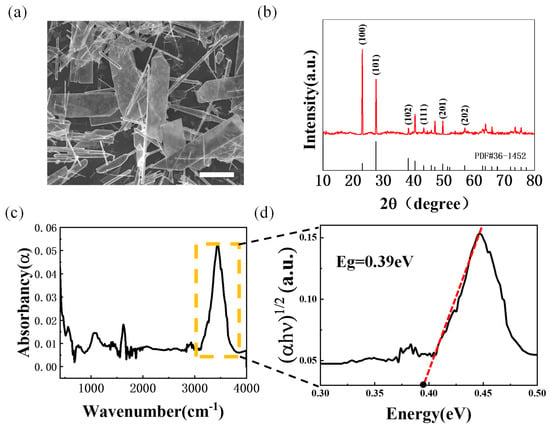
Figure 1

Journal Menu
► ▼ Journal Menu-
- Nanomaterials Home
- Aims & Scope
- Editorial Board
- Reviewer Board
- Topical Advisory Panel
- Instructions for Authors
- Special Issues
- Topics
- Sections & Collections
- Article Processing Charge
- Indexing & Archiving
- Editor’s Choice Articles
- Most Cited & Viewed
- Journal Statistics
- Journal History
- Journal Awards
- Society Collaborations
- Conferences
- Editorial Office
Journal Browser
► ▼ Journal BrowserHighly Accessed Articles
Latest Books
E-Mail Alert
News
Topics
Topic in
Applied Sciences, Energies, Materials, Nanoenergy Advances, Nanomaterials
Applications of Nanomaterials in Energy Systems, 2nd Volume
Topic Editors: Eleftheria C. Pyrgioti, Ioannis F. Gonos, Diaa-Eldin A. MansourDeadline: 30 April 2024
Topic in
Materials, Nanomaterials, Photonics, Polymers, Applied Sciences, Sensors
Optical and Optoelectronic Properties of Materials and Their Applications
Topic Editors: Zhiping Luo, Gibin George, Navadeep ShrivastavaDeadline: 20 May 2024
Topic in
Biomedicines, Cancers, JFB, Nanomaterials, Polymers
Advanced Functional Materials for Regenerative Medicine
Topic Editors: Antonino Morabito, Luca ValentiniDeadline: 6 June 2024
Topic in
Cancers, Cells, JCM, Radiation, Pharmaceutics, Applied Sciences, Nanomaterials, Current Oncology
Innovative Radiation Therapies
Topic Editors: Gérard Baldacchino, Eric Deutsch, Marie Dutreix, Sandrine Lacombe, Erika Porcel, Charlotte Robert, Emmanuelle Bourneuf, João Santos Sousa, Aurélien de la LandeDeadline: 30 June 2024

Conferences
Special Issues
Special Issue in
Nanomaterials
Sustainability in Nanomaterials and Photonics Research
Guest Editors: Kunyan Zhang, Na Zhang, Bartolomeu Cruz VianaDeadline: 27 April 2024
Special Issue in
Nanomaterials
Nano-Photonics and Meta-Nanomaterials
Guest Editor: Suchand SandeepDeadline: 10 May 2024
Special Issue in
Nanomaterials
Applications of Nanomaterials in Biomedical Imaging and Cancer Therapy II
Guest Editor: James ChowDeadline: 20 May 2024
Special Issue in
Nanomaterials
Hierarchical Nanostructured Materials for Multifunctional Applications
Guest Editor: Xusheng DuDeadline: 31 May 2024
Topical Collections
Topical Collection in
Nanomaterials
Process Intensification, Process Design and Green Techniques for Nanomaterials Production and Applications
Collection Editors: Marco Stoller, Giorgio Vilardi
Topical Collection in
Nanomaterials
Magnetic Nanostructured Materials: Synthesis, Characterization and Their Cutting-Edge Applications
Collection Editors: Vasileios Tzitzios, Georgia Basina
Topical Collection in
Nanomaterials
The Fourth State of Engineering: Nanoengineered Materials and Coatings Facilitated by Plasma Techniques
Collection Editors: Krasimir Vasilev, Kostya (Ken) Ostrikov, Thomas Michl, Akash Bachhuka
Topical Collection in
Nanomaterials
Nanoarchitectonics of the Fourth Fundamental Electronic Component: Memristor, Meminductor and Memcapacitor
Collection Editors: Firman Simanjuntak, Yao-Feng Chang, Sridhar Chandrasekaran






